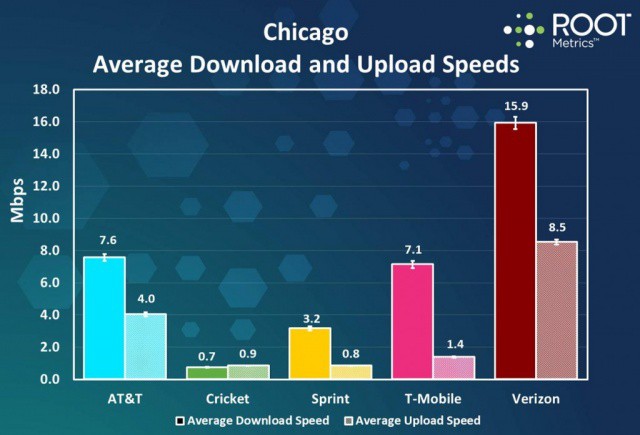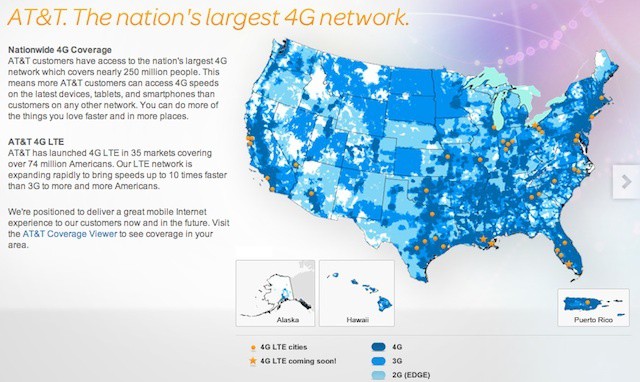As AT&T continues to roll out its LTE network across the country, some markets are getting markedly lower speeds for LTE iPads and other devices. In fact, two of the company’s largest markets are getting speeds below the national average for AT&T’s LTE service and below Verizon’s LTE service in those areas. Those two markets are Los Angeles and Chicago – but several other cities may be in for the same issues as AT&T expands its LTE service in the coming months
Chicago is the most recent city studied by RootMetrics. LTE connections in the windy city averaged downlink speeds of 7.6 Mbps and upload speeds at 4 Mbps. That’s certainly a gain over typical 3G speeds but it’s also well below Root’s average speeds across all of AT&T’s national markets, which according to GigaOm was 17.4 Mbps download and 8 Mbps upload.
In investigating the significant difference of performance, GigaOm discovered that AT&T has a smaller range of frequency to use in offering LTE in Chicago. Most of AT&T’s markets use a range 20MHz of the 700MHz spectrum to deliver LTE. That’s on par with what Verizon uses in its LTE coverage. In some markets, however, AT&T has to make do with a narrower segment of spectrum – and Chicago is one of them. In and around Chicago, AT&T only has 10MHz to work with, resulting in the degraded performance.

The company faces similar challenges in Los Angeles and in a number of markets where it is due to rollout LTE service this year: Oklahoma City; Athens, Georgia; Charlotte and Raleigh-Durham-Chapel Hill, North Carolina; San Juan, Puerto Rico; and a some smaller regional markets in Texas and Indiana.
This isn’t a challenge unique to AT&T. As we reported last week, Sprint faces a similar spectrum issue nationwide and has opted to focus less on speed and more on reliability in building and marketing its nascent LTE service.
Overall, this may be one of the first major instances where the limits of available spectrum really goes from being a theoretical concern to an actual competitive drawback. In fact, less spectrum doesn’t just mean slower connections, it can also lead to more wireless congestion that can further degrade performance as more load is added to the network. AT&T still has some unused but licensed spectrum that may be able to help it out in that regard.
While there is a significant difference in performance compared to Verizon in Chicago and to other AT&T markets, 7.6 Mbps is still adequate for most mobile needs – but it something to consider if you’re buying an iPad with LTE (or any LTE device) and you live in one of the markets where AT&T is spectrum impaired compared to Verizon.
Source: GigaOm
Image: AT&T, RootMetics


